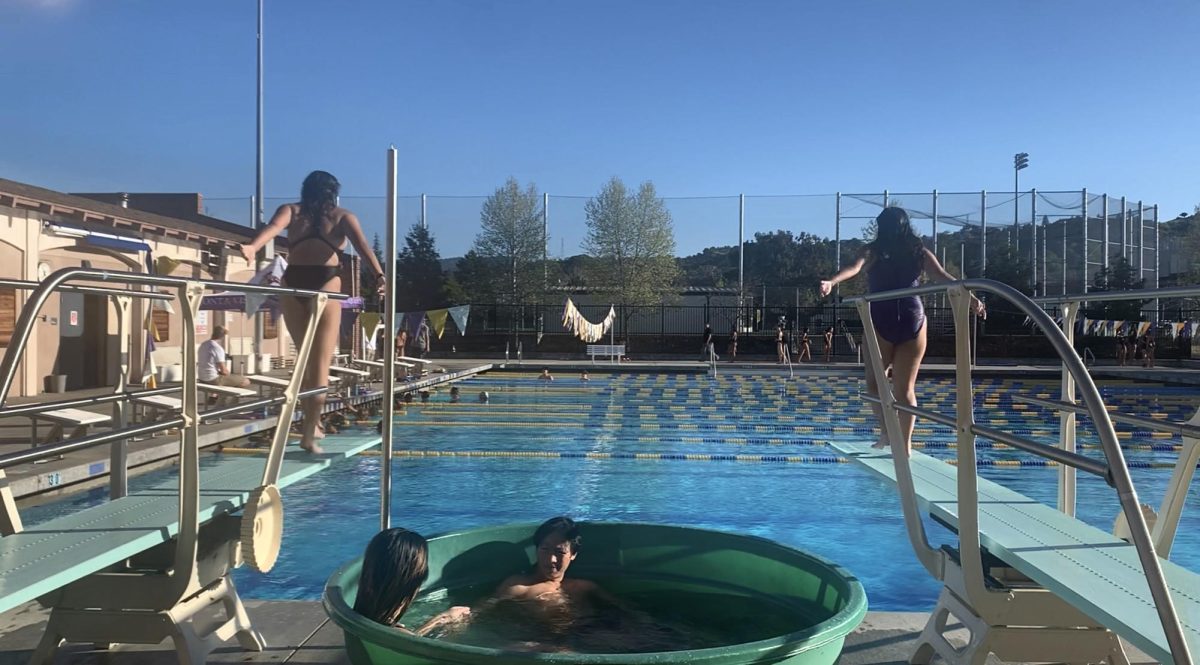His mind is whirling, but the world outside has come to a standstill.
Adrenaline courses through senior Kesav Viswanadha’s veins instead of blood as he stares at first the chess board, then his opponent. A furtive glance at the clock reveals that precious seconds are slipping past. The crowd is dead silent as people collectively hold their breath. The glaring lights, the tangible suspense— Beads of sweat begin to dot his forehead, but he cannot afford to break his concentration. His gaze slices through the tension to meet that of his competitor and all the while, he does not once leave his seat.
Not all sports are played with bat and ball, helmet and cleats, or puck and stick. When the traditional notion of a sport being highly physical is broken, the line between what is considered athletic and what isn’t is significantly blurred.
Thinking outside the cube
Senior Tiffany Chien has “speedcubed” for as long as she can remember. For her, speedcubing, although a competitive activity, has been more a mode of relaxation than anything else.
“Initially, my mom tried to get me to quit because she thought it was a waste of time, but I kept doing it regardless,” Chien said. “Eventually my parents became apathetic. I mean, they drive me to competitions, but they don’t support or go against it per se.”
The idea behind cubing goes beyond the ability to algorithmically solve the cube, but also the ability to progressively gain speed through each round of solving it. For Chien, her specialty is three-by-three speedcubing. While most boast their abilities to simply solve the cube, to Chien, any time that isn’t within a few seconds is not incredibly impressive.
“I think at this point, I can solve a three-by-three in 11 seconds or so,” Chien said. “I calculated being in the top 2 percent of cubers, and being a girl, that’s sort of uncommon.”
Cubing as a competitive activity requires thorough dedication and skill development; however, it is not officially recognized as a sport, nor have there been any motions for its recognition as one. And even though Chien is actively involved in competitive cubing, her stance on the activity being a sport is somewhat hazy.
“Yeah, I guess you could call it a sport, maybe. It depends on what you would consider a sport,” Chien said. “If you consider a sport something with excessive physical activity, then it isn’t. But [speedcubing] requires skill, training and equipment and it is competitive, so I would consider it a sport. In every other way, it is.”
Bridging the gaps
To senior Dan Zhukov, the card game bridge was an activity that effectively bridged the distance between the move from Russia to the United States. Having first learned the game in Russia, he became more involved after he arrived in America.
His first exposure to bridge tournaments was in New Jersey, when he and some of his cross country teammates got together one evening to play. From that point on, he began going to tournaments, playing more frequently after he moved to the Bay Area.
Bridge is traditionally played as a partnership game: two versus two. Since every card is dealt at some point, a player technically has the ability to know where each card is.
“There is this element of guessing and luck,” Zhukov said. “When you think through your moves, you have to account for the possibility that what you are guessing might not be the case.”
Zhukov, though not incredibly involved in the activity, still considers it to be no different from conventional athletics. For him, it is just a matter of breaking the boundaries and looking outside of the stereotypical perspective that is often set for sports.
“The thing about running is that it is a burst of 15 to 20 minutes, whereas bridge games can last a long, long time, and that definitely can affect the nerves,” Zhukov said. “I’d suggest to all of those people who scoff at the thought of it being considered a sport to try the game for themselves and see if they still think that way.”
Making the move
Chess has always been an integral part of junior Kesav Viswanadha’s life. He has traveled around the globe, winning tournament after tournament, building up his chess toolkit with several years of arduous practice.
Viswanadha started learning chess at the mere age of five after his parents signed him up for classes, and after several classes and thorough training, he slowly improved. Over the years, he has attended international competitions, such as the World Youth Chess Championships in Greece, and was recently crowned the North American Junior Champion at a tournament in Canada.
“[The game] really builds up character and stamina,” Viswanadha said. “I used to play tournaments once every two weeks, and now it’s maybe once a month. I’ve traveled all over the country, and even the world, and it’s been a really great experience.”
Currently, Viswanadha’s goal is to transcend his current position as an International Master, the second highest level possible for a competitive chess player to reach, to reach the Grandmaster position. Having trained for years to get to this level, to Viswanadha, chess is a sport in every sense — regardless of what other people have said about the activity.
“Anyone who says it isn’t a sport just doesn’t know the game well,” Viswanadha said. “I’ve grown up with this sport, and I have grown as a person and developed very unique skills because of the game. People just need to open up their minds and play the game before making judgments.”




















